Boracite is a mineral that belongs to the borate group and is known for its unique crystal structure and a variety of interesting properties. It is a naturally occurring mineral that is composed of boron, magnesium, and other elements. Boracite is valued for its industrial applications, as well as its significance in scientific research due to its intriguing magnetic and electrical properties.
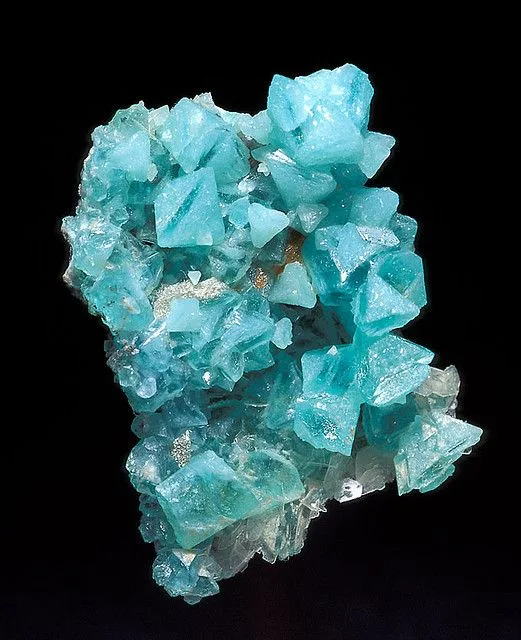
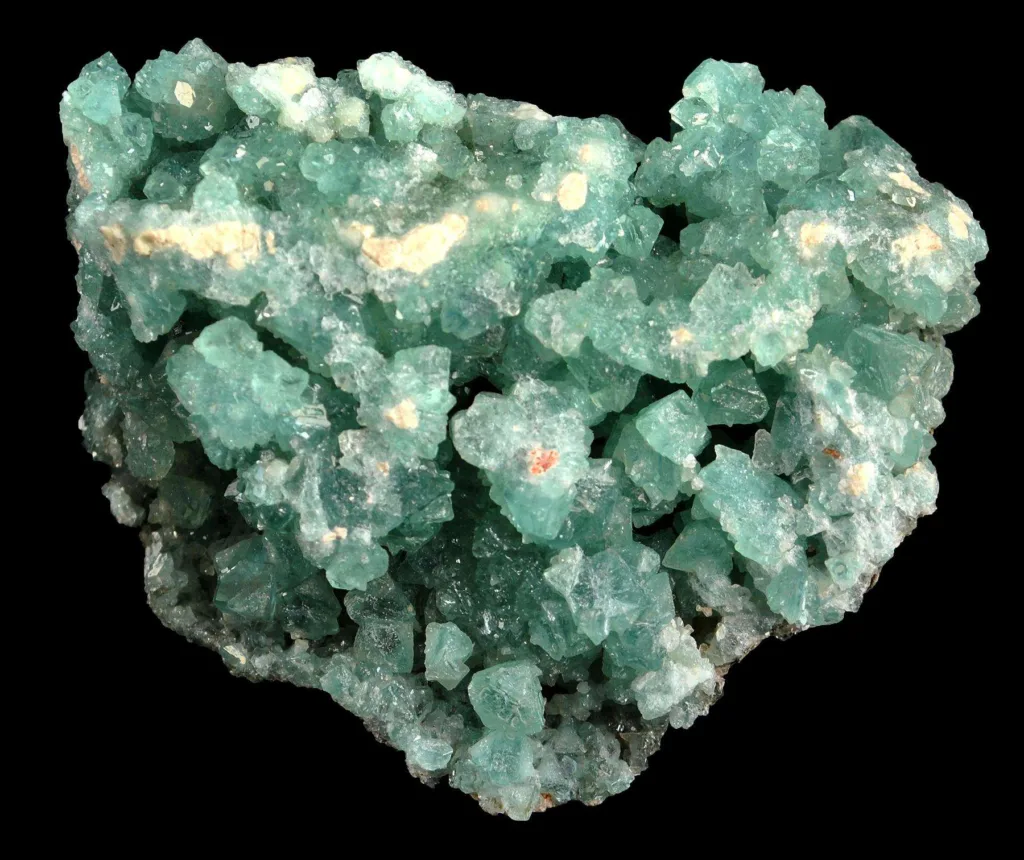
Definition: Boracite is a complex borate mineral with the chemical formula X3B6O12. It is classified as a ternary borate because it contains three distinct cations: boron (B), magnesium (Mg), and a metal cation (X), which can be zinc (Zn), iron (Fe), or other metals. The specific composition of the metal cation gives rise to different varieties of boracite.
Overview:
- Crystal Structure: One of the defining features of boracite is its crystal structure, which belongs to the cubic crystal system. Its crystal lattice arrangement is unique, characterized by large, cage-like structures formed by interconnected boron-oxygen polyhedra. These cages can encapsulate metal cations, giving boracite its distinctive properties.
- Physical Properties: Boracite exhibits a range of physical properties, including various colors such as white, gray, blue, green, or yellow, depending on the metal cation present. Its hardness falls in the range of 7 to 7.5 on the Mohs scale, making it relatively hard. It has a density ranging from 2.9 to 3.1 g/cm³.
- Occurrence: Boracite is primarily found in sedimentary and evaporitic environments, often associated with salt deposits. It forms through the precipitation of boron-rich solutions in the presence of magnesium and other metal cations. The mineral can occur as individual crystals, granular aggregates, or nodules within host rocks.
- Industrial Applications: Boracite’s unique properties make it valuable in various industrial applications. It is used in the production of refractory materials, which are resistant to high temperatures and harsh conditions. Boracite is also used in ceramics and as an abrasive or polishing agent.
- Scientific Significance: Boracite has captured the interest of researchers due to its remarkable magnetic and electrical properties. Depending on the metal cation present, boracite can exhibit ferromagnetic or antiferromagnetic behavior. This makes it a subject of study in the field of condensed matter physics and materials science.
- Varieties: Boracite occurs in different varieties based on the metal cation present in its structure. For example, magnesium boracite, zinc boracite, and iron boracite are some of the common varieties. These varieties can exhibit slightly different physical and magnetic properties.
In summary, boracite is a fascinating mineral with a distinctive crystal structure and a range of physical, magnetic, and electrical properties. Its applications in industry and scientific research highlight its importance in various fields, making it a subject of ongoing study and exploration.
Physical Properties of Boracite
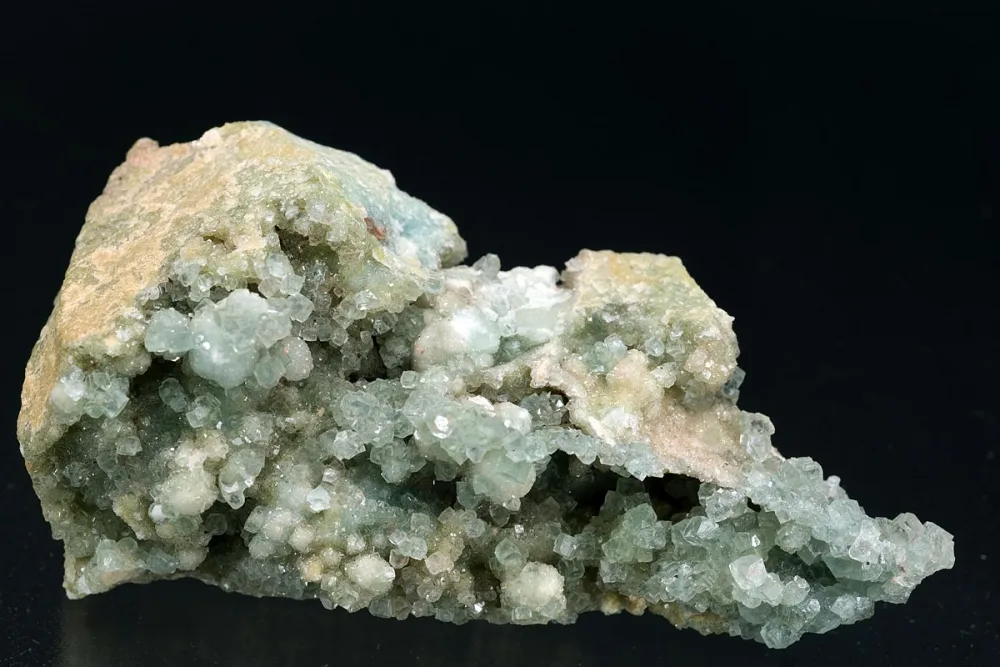
Boracite is a mineral with unique physical properties that contribute to its distinct appearance and utility in various applications. Here are some of the key physical properties of boracite:
- Color and Appearance:
- Boracite occurs in a variety of colors, including white, gray, blue, green, and yellow. The color is influenced by impurities and the specific metal cation present in its composition.
- The color variations often make boracite specimens visually appealing, and some varieties are even used as semi-precious gemstones.
- Crystal Habit:
- Boracite typically forms as well-developed cubic or octahedral crystals. These crystals have a characteristic geometric shape with smooth faces and sharp edges.
- It can also occur as granular aggregates, nodules, or massive forms within host rocks.
- Hardness and Cleavage:
- Boracite has a hardness of around 7 to 7.5 on the Mohs scale. This moderate hardness contributes to its use as an abrasive material.
- The mineral exhibits perfect octahedral cleavage, which means it can be easily cleaved along certain crystallographic planes to produce smooth surfaces.
- Density:
- The density of boracite ranges from approximately 2.9 to 3.1 g/cm³. The variations in density are influenced by the specific composition and impurities within the crystal lattice.
- Luster:
- The luster of boracite is vitreous to greasy. When light strikes its surfaces, it reflects with a characteristic glassy or slightly oily appearance.
- Transparency:
- Boracite is typically translucent to opaque, depending on the specific variety and the presence of impurities.
- Refractive Index:
- The refractive index of boracite varies depending on its composition and color. It ranges from approximately 1.6 to 1.7.
- The refractive index is a crucial factor in determining the gemological properties of boracite when it is used in jewelry.
- Streak:
- The streak of boracite is white. This refers to the color of the powdered mineral when it is scraped across a streak plate.
- Fluorescence:
- Some varieties of boracite can exhibit fluorescence under ultraviolet (UV) light. This fluorescence can range from weak to strong, and the color of fluorescence may vary.
- Magnetism:
- Boracite can exhibit magnetic properties, with variations based on the metal cation present. Some forms of boracite are ferromagnetic, meaning they become strongly magnetized in the presence of an external magnetic field.
These physical properties collectively contribute to the mineral’s identification, uses in industry and research, and its potential as a decorative gemstone. The combination of its hardness, color variety, and unique crystal habit makes boracite a fascinating material to study and work with.
Occurrence and Formation of Boracite

Boracite is primarily found in sedimentary and evaporitic environments, often associated with salt deposits. Its formation involves the precipitation of boron-rich solutions in the presence of magnesium and other metal cations. Here’s a detailed look at the occurrence and formation of boracite:
Occurrence:
- Boracite is commonly found in sedimentary rock formations, salt deposits, and evaporite beds. It often occurs in conjunction with other minerals such as halite (rock salt), gypsum, and anhydrite.
- Notable boracite deposits are found in regions with evaporitic basins, where the evaporation of water leads to the concentration of dissolved minerals and the subsequent formation of minerals like boracite.
- Some specific locations where boracite deposits have been found include Germany, Austria, Russia, Turkey, China, and the United States.
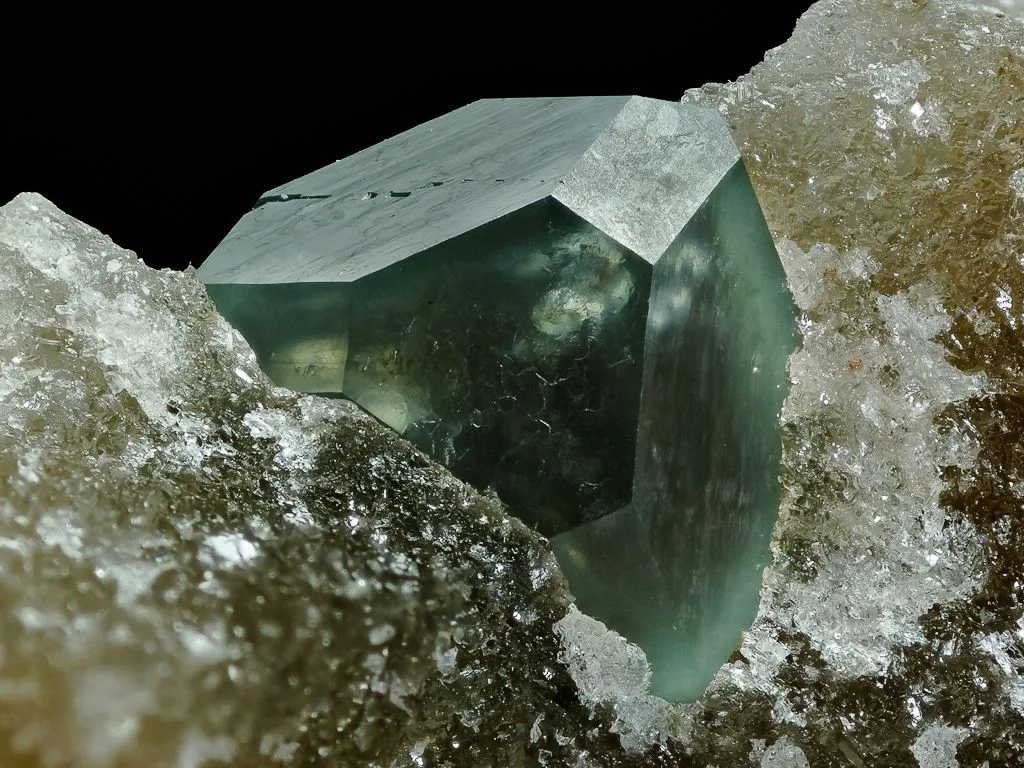
Formation:
- Evaporitic Conditions: The formation of boracite is closely linked to the conditions of evaporation in saline environments. These environments are characterized by the presence of saline or brine solutions with high concentrations of dissolved minerals.
- Boron-Rich Solutions: Boracite forms from solutions rich in boron compounds, often derived from the leaching of boron-containing minerals present in the surrounding rocks. Borate minerals can be present in adjacent sedimentary layers or may result from hydrothermal processes.
- Metal Cation Incorporation: The crystal structure of boracite includes boron, magnesium, and a metal cation (such as zinc, iron, or others). These cations are incorporated into the crystal lattice as the mineral forms. The specific metal cation present influences the mineral’s physical and magnetic properties.
- Precipitation and Crystallization: As the saline solutions evaporate due to environmental conditions (such as arid climates or changes in water levels), the dissolved minerals become increasingly concentrated. This high concentration leads to the precipitation and crystallization of boracite and other minerals.
- Temperature and Pressure: Temperature and pressure conditions during the evaporation process also play a role in determining the composition and characteristics of the resulting boracite crystals. Variations in temperature and pressure can affect crystal growth and the inclusion of impurities.
- Aggregation and Deposition: Over time, the crystals of boracite may aggregate, forming nodules or clusters within the host rock. These nodules can be discovered as isolated formations or as part of larger sedimentary structures.
The formation of boracite is a complex interplay of geological, chemical, and climatic factors. The unique combination of boron, magnesium, and metal cations in its crystal structure gives rise to its distinct properties. Studying the conditions under which boracite forms provides insights into the geological history of the regions where it is found and contributes to our understanding of mineral formation processes in evaporitic environments.
Distribution of Boracite Deposits
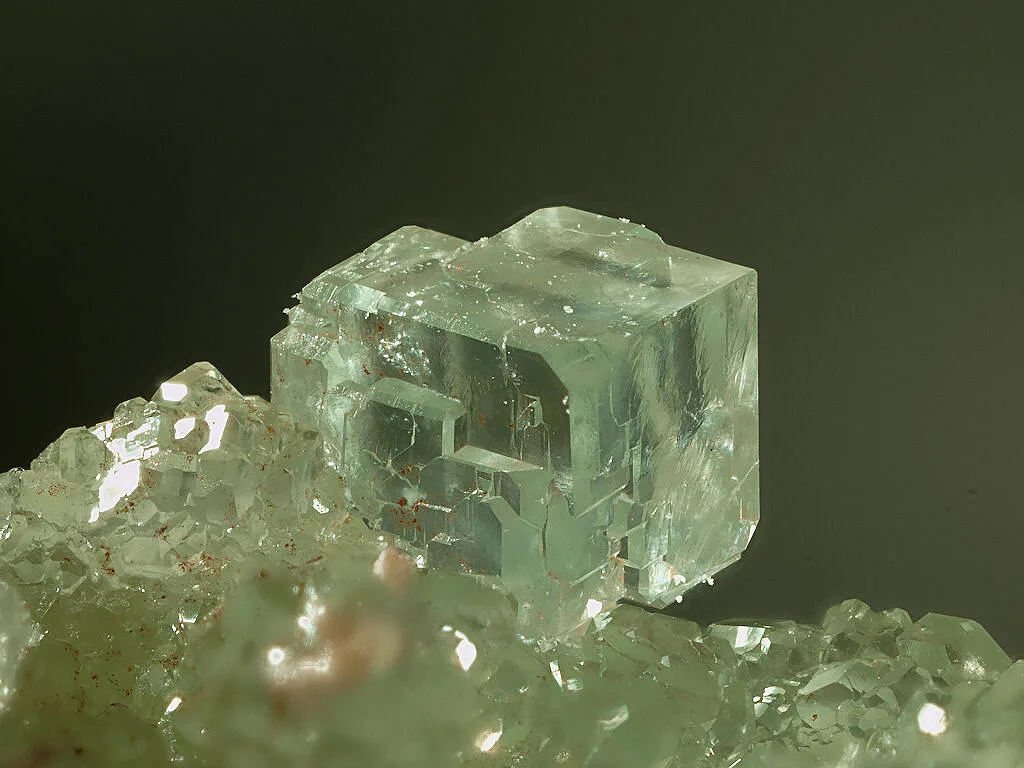
Boracite is a relatively rare mineral that is primarily found in specific geological settings. Its occurrence is linked to evaporitic environments and is often associated with salt deposits. Here’s a look at the distribution of boracite deposits around the world:
1. Germany:
- Germany is known for some of the most well-known and significant boracite deposits. Notable occurrences include deposits in the Stassfurt Potash Deposit located in Saxony-Anhalt. These deposits are part of a rich geological formation that contains various minerals, including boracite.
2. Austria:
- Austria has also been a significant source of boracite. The region of Styria, specifically the St. Stefan ob Leoben area, is known for its boracite deposits. These deposits have been studied for their mineralogical and geological significance.
3. Russia:
- Russia hosts boracite deposits in various regions. Notable locations include the Ural Mountains and Siberia. These deposits are often associated with evaporitic sequences in sedimentary rocks.
4. Turkey:
- Boracite deposits are found in Turkey, particularly in the Bigadiç Borate District. Turkey is one of the largest producers of borates in the world, and boracite is among the minerals extracted from these deposits.
5. China:
- China is another country with boracite occurrences. Deposits have been identified in regions like the Xinjiang Uygur Autonomous Region. China’s extensive mineral resources include borates like boracite.
6. United States:
- In the United States, boracite has been found in areas such as California. While not as prominent as other sources, the U.S. has contributed to the global distribution of this mineral.
7. Other Countries:
- Boracite occurrences have also been documented in countries like Italy, Pakistan, Greece, and Hungary, among others. These occurrences might be less well-documented or less extensive compared to the major sources.
It’s important to note that boracite deposits are relatively localized and not widespread. They are often associated with specific geological conditions that favor the formation of evaporite minerals. The mineral’s formation within evaporitic environments, where brine solutions evaporate and concentrate minerals, contributes to its limited distribution.
Given the diverse countries where boracite has been identified, its distribution provides insights into the global distribution of evaporitic basins and the geological processes that lead to the formation of minerals in such environments.
Types and Varieties of Boracite

Boracite comes in several varieties based on the specific metal cation present in its crystal structure. The metal cation influences the mineral’s color, physical properties, and sometimes its magnetic behavior. Here are some of the common types and varieties of boracite:
- Magnesium Boracite (Mg3B7O13Cl):
- Magnesium boracite is one of the most common varieties of boracite.
- It typically appears as colorless, white, or pale yellow crystals.
- Magnesium boracite is used as a source of boron in various industries and research applications due to its relatively simple composition.
- Zinc Boracite (Zn3B7O13Cl):
- Zinc boracite is characterized by its green to blue-green coloration.
- Its distinct color is attributed to the presence of zinc in the crystal structure.
- Zinc boracite is known for its weak ferromagnetic properties and has been studied for its potential applications in magnetic and electronic devices.
- Iron Boracite (Fe3B7O13Cl):
- Iron boracite appears in various shades of brown, from light to dark.
- Its color is a result of iron incorporation into the crystal lattice.
- Iron boracite can exhibit both ferromagnetic and antiferromagnetic behavior, making it interesting for magnetic studies.
- Manganese Boracite (Mn3B7O13Cl):
- Manganese boracite is less common and occurs in shades of pink to purplish-red.
- Its distinctive color is due to the presence of manganese.
- Manganese boracite’s magnetic behavior can vary based on the presence of different manganese oxidation states.
- Calcium Boracite (Ca3B6O12):
- Calcium boracite is a rare variety that lacks the chloride component found in other boracite types.
- It appears as colorless to white crystals.
- This variety is less studied compared to the chloride-containing boracites.
- Other Varieties:
- Boracite can potentially incorporate other metal cations, leading to additional varieties with unique properties.
- These can include varieties with strontium, barium, or other metals.
The presence of different metal cations in boracite’s crystal structure results in variations in color, magnetism, and other physical properties. These varieties are of interest not only for their mineralogical significance but also for their potential applications in various fields, including materials science, electronics, and condensed matter physics. The range of boracite varieties demonstrates the versatility and complexity of mineral formations driven by the interplay of different elements in geological settings.
Uses and Applications of Boracite
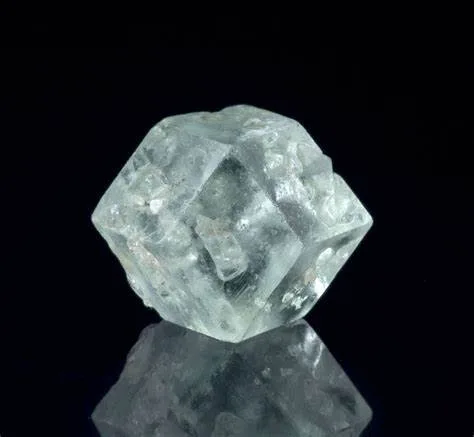
Boracite’s unique physical and magnetic properties make it valuable in a range of industrial applications, as well as in scientific research. Here are some of the main uses and applications of boracite:
- Refractory Materials:
- Boracite’s high melting point and resistance to thermal shock make it suitable for use in refractory materials. These materials are used in lining furnaces, kilns, and other high-temperature industrial processes.
- Ceramic Production:
- Boracite is added to ceramics to enhance their properties. It can improve the strength, thermal stability, and resistance to chemical attack of ceramic materials.
- Abrasives and Polishing:
- Boracite’s hardness makes it useful as an abrasive material. It is added to abrasive products like grinding wheels, sandpaper, and polishing compounds to aid in material removal and surface finishing.
- Magnetic and Electrical Applications:
- Boracite’s magnetic behavior, especially in zinc and iron varieties, makes it interesting for applications in magnetism and electronics.
- It has been studied for its potential use in spintronics, a field that explores the manipulation of electron spin for advanced electronic devices.
- Scientific Research:
- Boracite’s complex magnetic properties have attracted researchers in condensed matter physics and materials science. It provides insights into magnetic interactions and can serve as a model system for studying magnetic behavior.
- Gemology and Jewelry:
- Some varieties of boracite, particularly those with appealing colors and transparency, are cut and polished for use in jewelry. However, due to its relative rarity, boracite is not a widely recognized or extensively used gemstone.
- Historical and Cultural Significance:
- In the past, certain boracite varieties were used for ornamental purposes, such as in jewelry or decorative objects.
- Potential Electronic Devices:
- Boracite’s unique magnetic and electronic properties have led to investigations into its potential use in magneto-optical devices, sensors, and other electronic applications.
- Catalysis:
- Boracite has been explored for potential catalytic applications due to its unique crystal structure and surface properties.
It’s important to note that while boracite has diverse applications and potential uses, its availability is limited by its relatively rare occurrence. Additionally, its utilization in certain industries may be influenced by economic and market factors. Nonetheless, ongoing research into boracite’s properties and potential applications continues to expand its relevance in various technological and scientific fields.
Use of Boracite in Jewelry and Ornaments

Boracite, with its range of colors and unique crystal structure, has been used in the past for ornamental purposes such as jewelry and decorative objects. However, it’s worth noting that boracite’s use in jewelry is relatively limited compared to more traditional gemstones due to its rarity and lesser-known status. Here’s how boracite has been used in jewelry and ornaments:
- Gemstone Cutting: Certain varieties of boracite, particularly those with appealing colors like blue, green, and yellow, have been cut and polished into gemstones. These gemstones are typically used in jewelry, such as rings, pendants, earrings, and necklaces.
- Cabochons: Boracite can be shaped into cabochons, which are polished, rounded, and domed stones without facets. Cabochons highlight the color and patterns within the stone, making them suitable for settings like rings and pendants.
- Collectible Items: Unique and well-formed boracite crystals are sometimes collected as mineral specimens by enthusiasts and collectors. These specimens can be displayed as decorative items and can hold both aesthetic and scientific value.
- Carvings and Sculptures: Boracite’s relative hardness makes it suitable for carving and sculpting. While not a commonly used material for carving, skilled artisans may use boracite to create intricate sculptures or decorative pieces.
- Limited Availability: Boracite’s scarcity limits its widespread use in jewelry and ornaments. Its relatively unknown status compared to more popular gemstones also contributes to its limited presence in the jewelry market.
- Historical Use: In the past, boracite may have been used in historical jewelry and ornaments, especially in regions where deposits were accessible. However, such historical uses are not extensively documented.
It’s important to consider that while boracite has potential as a gemstone, its use in jewelry is not as common as traditional gemstones like diamonds, rubies, sapphires, and emeralds. Factors such as availability, awareness among consumers, and market demand influence the utilization of boracite in the jewelry industry. Additionally, its use is more prevalent in specialized markets and among collectors who appreciate its unique qualities.
Conclusion
Boracite is a mineral that captivates both scientific researchers and industrial applications due to its distinct properties and versatile uses. Its unique crystal structure, variations in color based on metal cations, and magnetic behavior make it a fascinating subject of study. From its origins in evaporitic environments to its applications in various fields, boracite’s significance is multi-faceted.
While its rarity limits its widespread use, boracite finds its place in industries requiring materials that withstand high temperatures, resist wear and tear, and possess intriguing magnetic qualities. Its role in refractory materials, ceramics, and potential electronic devices underscores its value in technological advancements.
Boracite’s presence in the jewelry and ornamentation market, although limited, showcases its aesthetic potential, particularly in gemstone cutting and cabochon crafting. Despite its unique qualities, boracite remains less known compared to more conventional gemstones.
The study of boracite extends beyond its applications, providing insights into mineral formation, crystallography, and magnetic phenomena. As research continues, this mineral’s role in pushing the boundaries of science and technology is expected to grow, possibly uncovering new applications and uses that could shape industries and fields of study.
In conclusion, boracite stands as a testament to the diverse interplay of geology, chemistry, physics, and industry, offering a glimpse into the intricate world of minerals and their potential to influence our technological and creative pursuits.




































